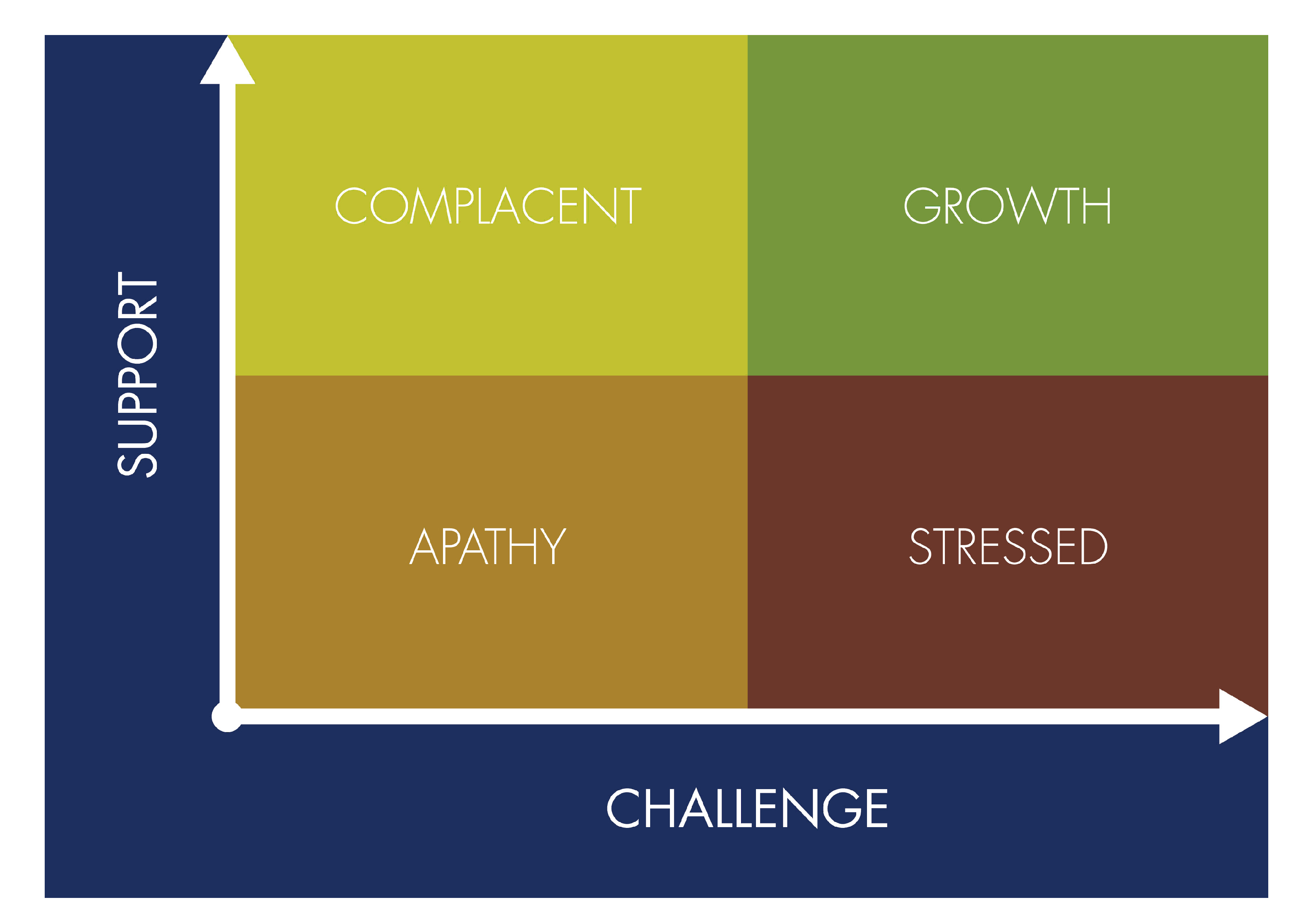Over the past five years we have worked with hundreds of youth workers who are struggling in the field. We have searched for a model to explain this to no avail. We heard stories of the challenge of youth work and we heard stories of the need for support.We have done the research and we can tell you why people leave the field. We can tell you how to keep people in their jobs. However, there was no neat package that we could use to help managers understand what was going wrong and frontline staff to recognise where they were at… until now.
Let us introduce you to the challenge/support matrix
 We love this Quadrant Matrix as it so easily sums up the issues we hear every day. As you can see there are two Axis: Challenge and support. These two axis are broken down to four quadrants.
We love this Quadrant Matrix as it so easily sums up the issues we hear every day. As you can see there are two Axis: Challenge and support. These two axis are broken down to four quadrants.
Quadrant 1 (STRESSED) High Challenge/Low Support
In a nutshell one of the main complaints we get from youth workers are that they get too little support and feel that they are too challenged. This leads many of the youth workers we speak to to end up highly stressed. These youth workers often tell us that they rarely see their manager accept when their review is due or a discussion about KPI’s needs to be had. They also tell us that their case loads are ever growing and there is no more resources or time to support the young people they work with. When asked about their last supervision session these youth workers almost always laugh and say “what supervision“.
Quadrant 2 (Apathy) Low Challenge/Low Support
When we see youth workers who are seeming to become apathetic about their jobs we often see that there has been an absence in the support they need to do the job and a co-occuring lack of challenge. Often this has come as a manager has decided that they are beginning to check out or that they cant be trusted to do anything bigger than the role they already have. In taking away challenge Managers hope to see their staff rise up in their mundane tasks. Unfortunately, what tends to happen is that the staff member does not see a future and ends up apathetic.
Quadrant 3 (Complacent) Low Challenge/High Support
In our experience this is the rarity. However in some spaces such as local government or some community based organisations we come across youth workers who feel that they have way too much support but little to no challenge. These youth workers almost always tell us that their managers know everything about them. In fact their Manager is often a good friend to the unsuspecting youth worker. There are cakes for birthdays, long lunches and no challenges. The Managers often tell us that they are trying to shield their staff from the endless KPI’s and funding issues. They tell us they want to be liked by their staff. They tell us that their team is important to them. What we see in this situation is the team ends up collapsing due to no one showing initiative or staff leaving to seek their next move. The other issue that comes up is the team that is so cliquey that no one will ever leave… even when they should.
Quadrant 4 (Growth) High Challenge/High Support
The final quadrant is where we hope to see every youth worker. In this Quadrant you are supported extensively by your manager. You get good supervision and training. You get regular debriefing. You are given the time you need to do your work. There is a trusting relationship between you and your manager. On the other hand you are challenged. You are asked to be better every time. You are asked to learn more every week. You may be encouraged to do more study to gain higher qualifications. You are given opportunities to stretch your skills. To try new things. To become a leader. To grow.
Which Quadrant are you in? What do you need to do to get into Quadrant 4?
Leave a comment below.